M&A, Antitrust and the Board Room in 2018: Challenges and Conundrums for the West Coast
March 6, 2018
Recap
- Recap
- Agenda
- Participants
Recap
We were grateful that approximately 200 of you participated in Cleary Gottlieb’s fourth annual M&A, Antitrust and the Board Room conference at the historic Federal Reserve building in San Francisco, hosted and co-sponsored by our friends at Berkeley Law School, as well as sponsors Innisfree M&A and MacKenzie Partners.
Below are images and key takeaways from the day’s discussions.
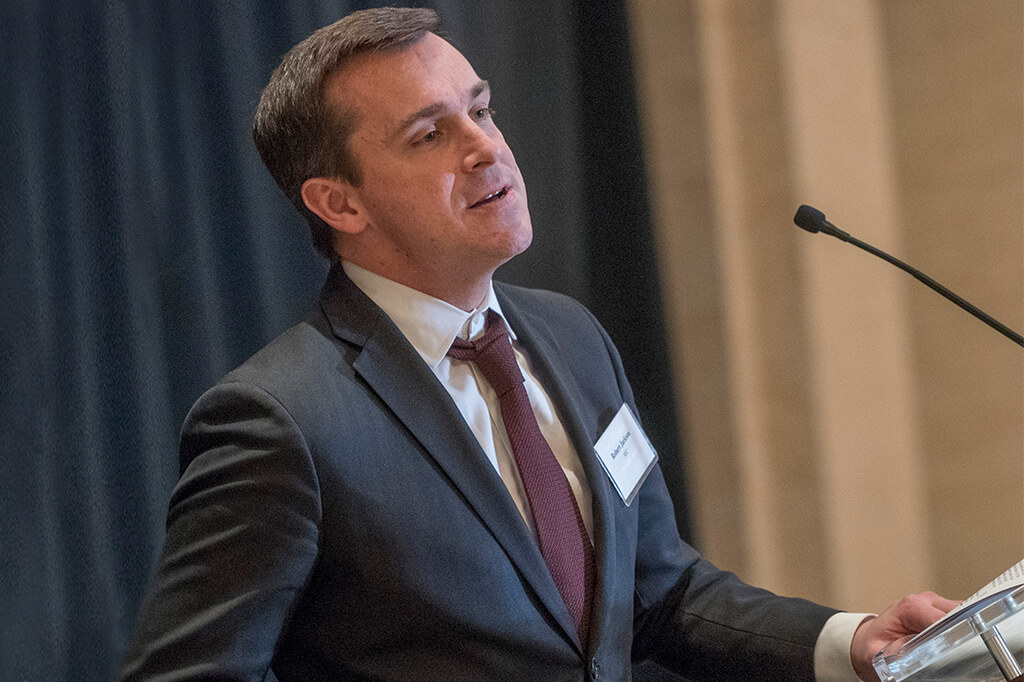
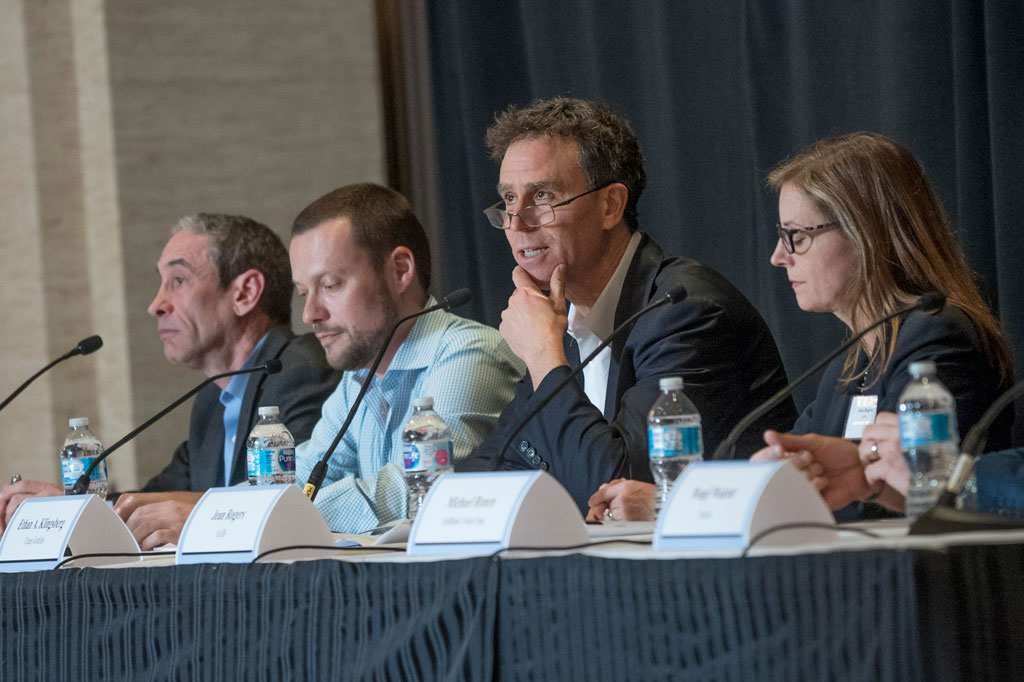
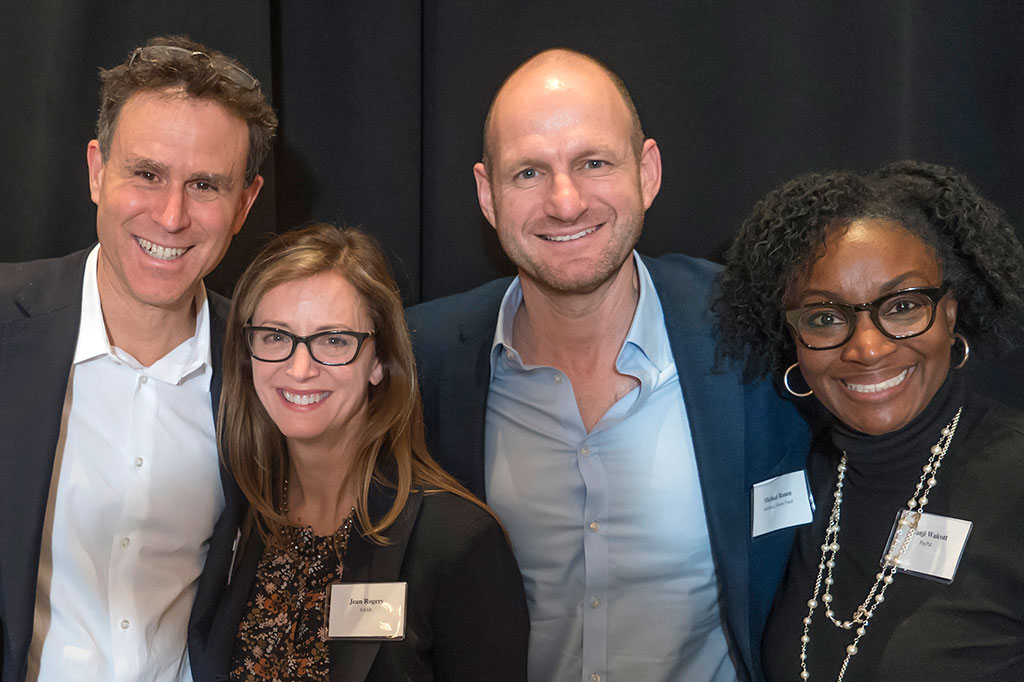
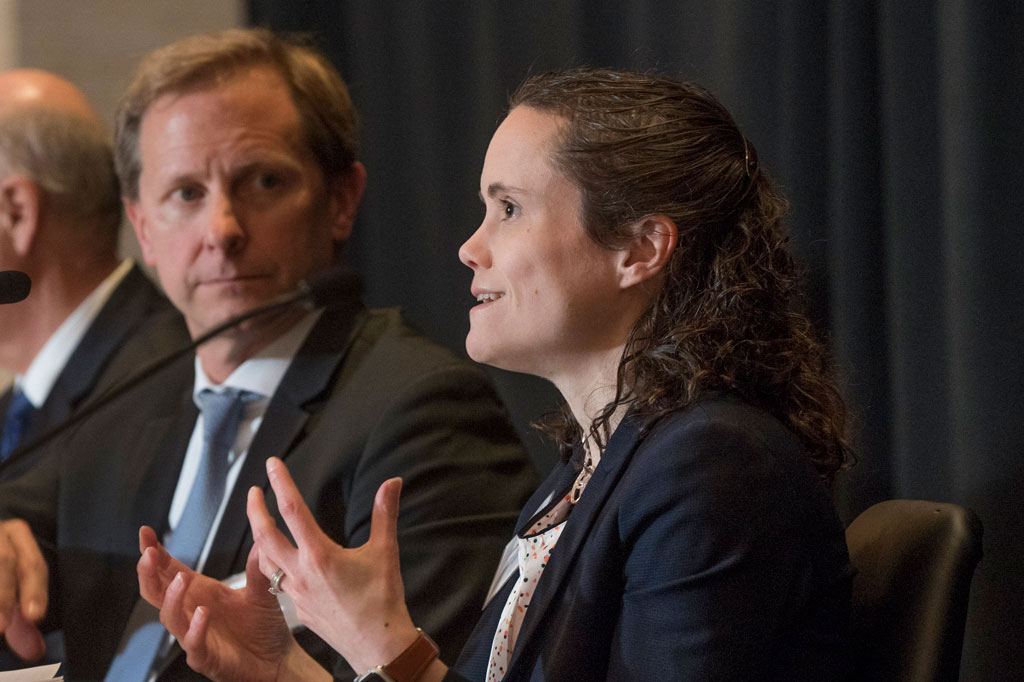
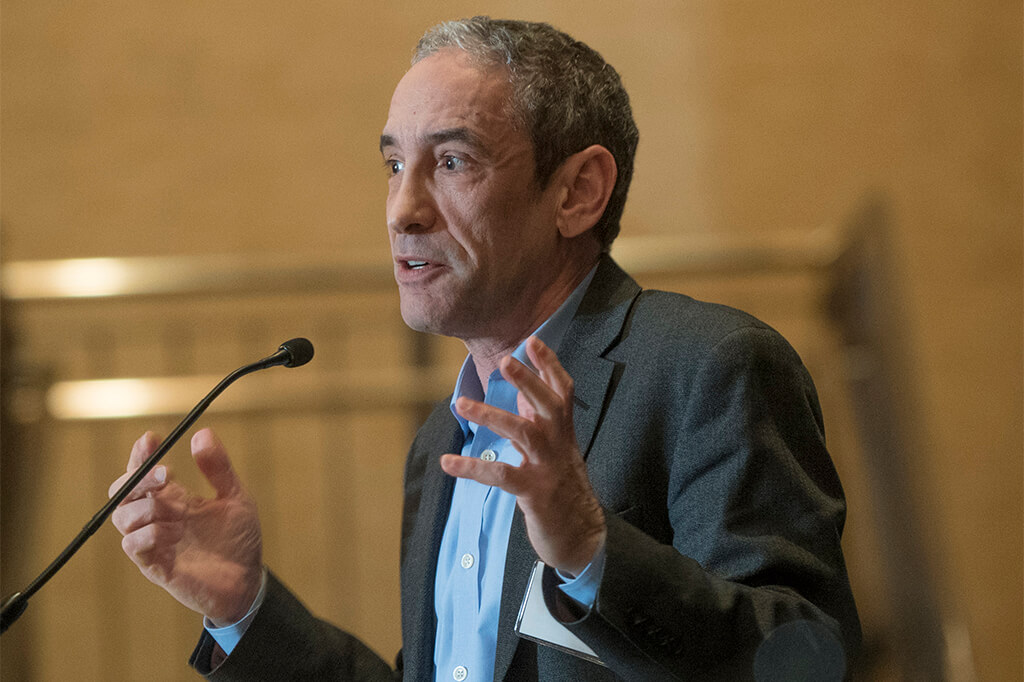
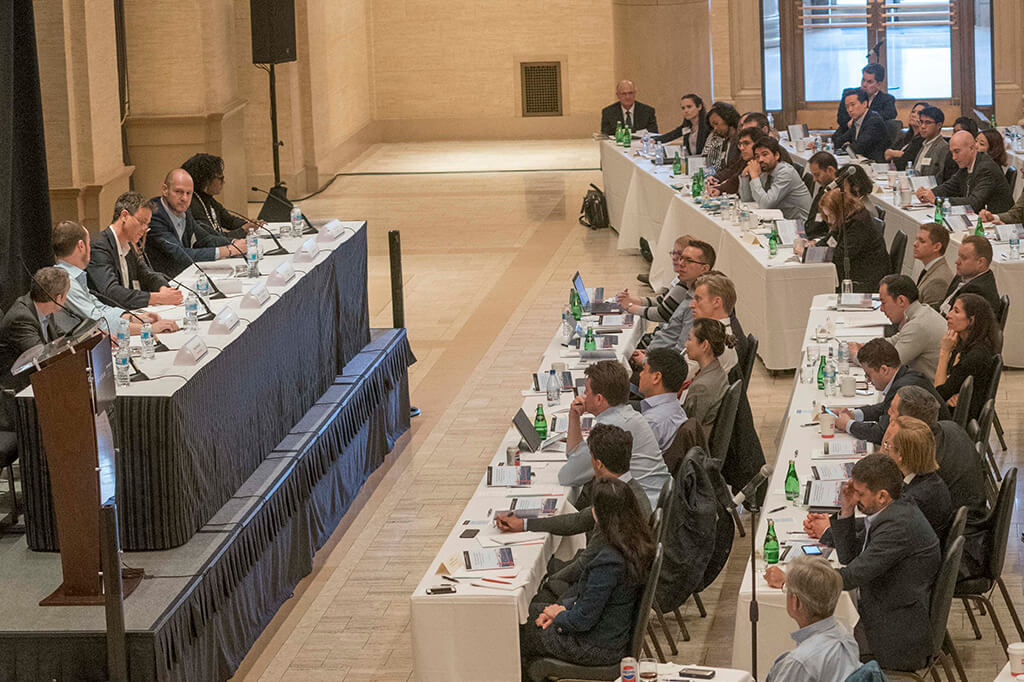

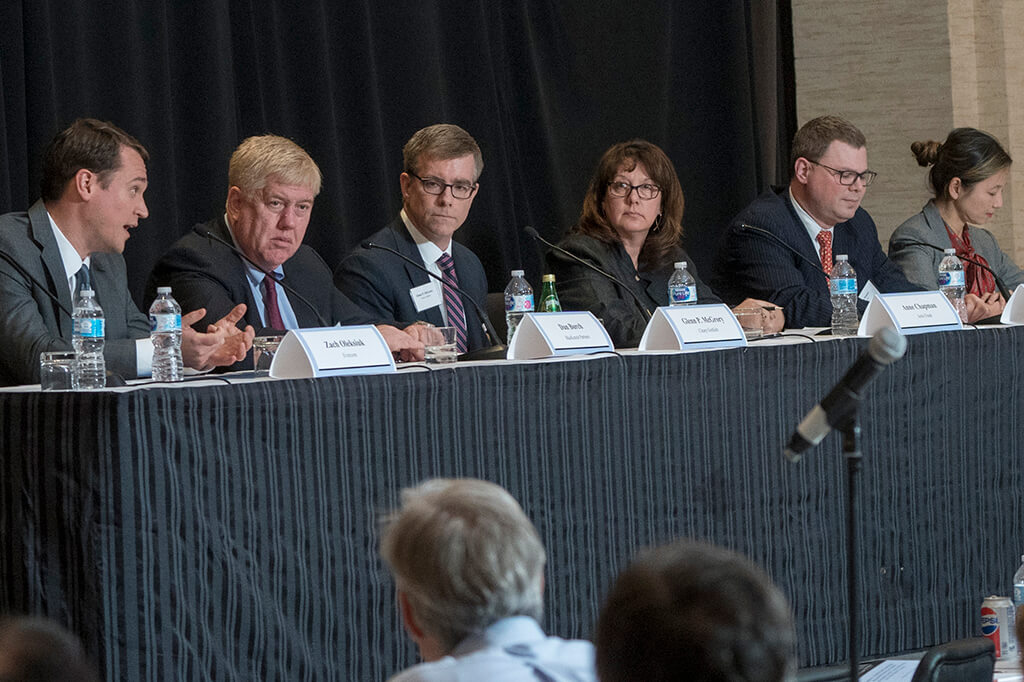

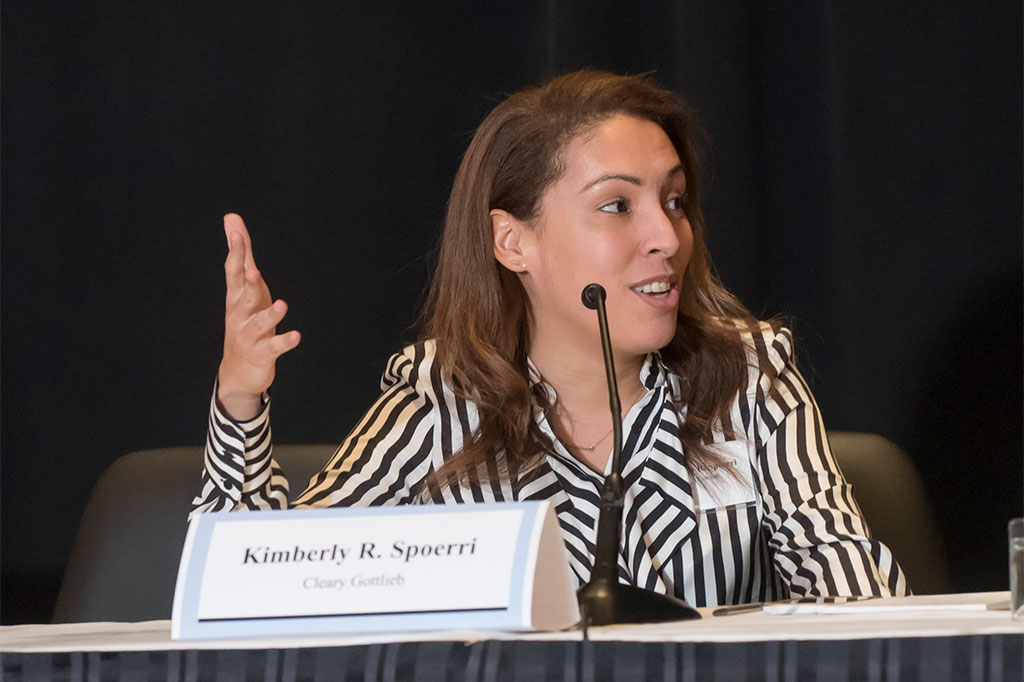
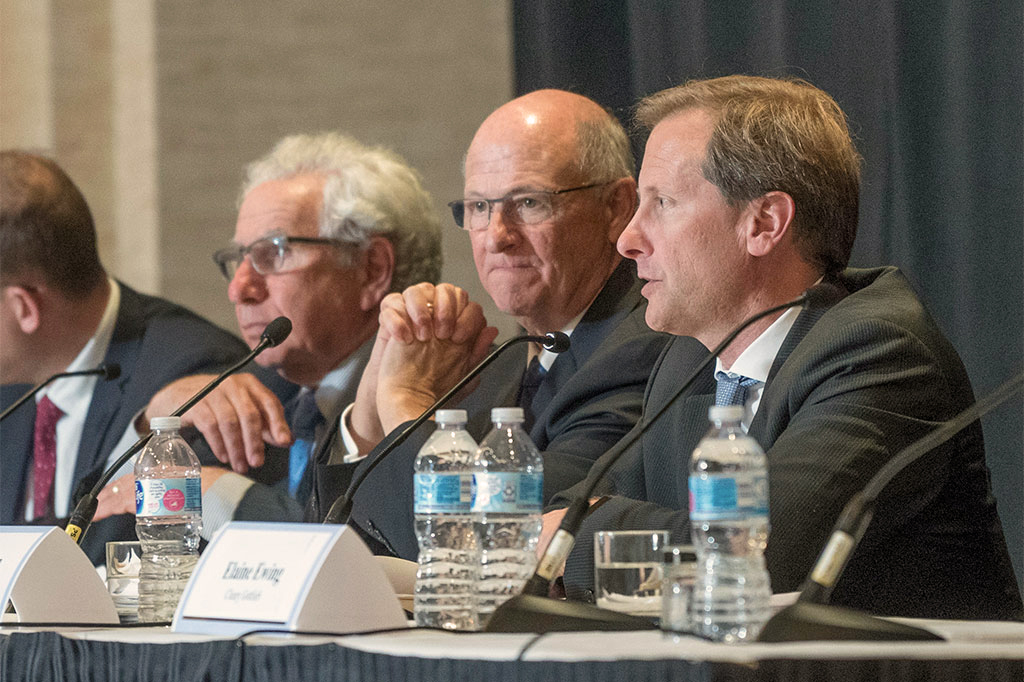











SEC Commissioner Jackson Takes on Multi-Class Voting; Participant Response
SEC Commissioner Robert Jackson, Jr. opened the conference with “The Case Against Corporate Royalty,” his first speech since joining the SEC. He fearlessly took on the hot-button issue of multi-class share structures (see our posts here and here).
Commissioner Jackson, who is known for using data-driven analyses, cited a number of analyses relating to the impact of multi-class structures. Then, after expressing sentiments in favor of private ordering and criticisms of the recent moves by all the major indices to limit participation by new multi-class issuers, he ultimately came out against the adoption of multi-class structures that are not subject to any expiration (commonly referred to as “sunset provisions”).
He ended his speech with a strong call for the NYSE and NASDAQ to propose listing rules that require multi-class issuers to have sunset provisions and, in connection with these proposals, to foster a robust debate on the topic that takes into account more views and is characterized by more transparency and rigor than the decision-making processes at the indices on this subject matter. He refrained from endorsing a particular sunset formula and pledged his support for making these deliberations as rich as possible.
Participants questioned whether U.S. exchanges, which are under competitive pressure from exchanges abroad that permit multi-class structures and due to the diminishing number of publicly traded issuers, will be up to this task, but nonetheless welcomed the Commissioner’s effort to take this debate out of the jurisdiction of the indices and into a realm where a broader spectrum of actors will have input. Others noted that the stakes are higher when listing, as opposed to index inclusion, is being regulated.
The full text of the Commissioner’s remarks at the conference are posted on the SEC website here.
Implications of Throwing Rocks at the Google Bus for Fiduciary Duties and Investment Structures
The next speaker, Douglas Rushkoff, followed up on Commissioner Jackson’s focus on the impacts that arise from the nature of and structures for investment, especially in the tech and life sciences sectors. Drawing on themes from his best-seller, Throwing Rocks at the Google Bus, and his well-received keynote address at Austin’s South by Southwest Conference, Doug reviewed the impact of VC investing structures and public trading market structures and how, when combined with the use of code and other technologies, they lead to unintended adverse effects on communities and the hijacking of the visions and objectives of founders to an extent that is unrivaled in history.
He called on the corporations and their investors and advisors to embrace alternative approaches, including nonstock corporations, public benefit corporations, tax reforms that (through the promotion of the value of dividends and the increase of the tax costs of capital gains) would ease the pressure to accelerate returns and growth, and visions that enhance the velocity of reciprocally beneficial impacts between a corporation and its constituents. Participants ranging from representatives of governmental regulators (including from abroad) to those in the venture capital community and from high-profile Silicon Valley issuers responded by embracing Doug’s insights and raising questions about directions for reforms and change.
Pursuit of Social Good: Navigation of Fiduciary Duties and the Investor Landscape in 2018; and Solutions for Multi-class Issuers
Building on the background of the two opening talks, Michael Ronen, a leader of the Softbank $90+ billion Vision Fund; Lev Finkelstein, the head of corporate finance at Dropbox; Wanji Walcott, the general counsel of PayPal; and Jean Rogers, the chair of the Sustainability Accounting Standards Board, took to the stage to discuss practical implications of these themes on a panel moderated by Cleary partner and conference chair Ethan Klingsberg.
Michael critiqued the operation of the world of venture financing and described the lengthening of the runway to liquidity events that may be emerging from more patient financing by mega-funds like the Softbank Vision Fund and sovereign wealth funds, as well as through the approach in Europe to growing privately held enterprises over long periods.
Lev then explained the dynamic at Dropbox and how the visions and incentives of their investors and directors were more diverse than one might think and how these visions actually led to a healthy balance of considerations for different time horizons for growth and liquidity and consideration of different constituencies.
In addition, Michael and Lev drew on their tenures as financial advisors to boards of publicly traded technology companies and contrasted the dynamic there in instructive ways with the boardroom dynamics of private technology companies. These insights were particularly interesting for participants from private companies considering IPOs and late-stage financing alternatives.
Wanji then reviewed how her role as a general counsel supporting the directors of a public company has transformed in recent years from being expert in assuring compliance with Delaware fiduciary duty principles to being expert in investor expectations of good governance. Ethan joined Wanji in discussing the increasing importance of the role of investor relations personnel as the best-placed individuals to assure that executives and directors understand what portions of the long-term strategic plan are either not fully understood or not resonating with investors. In addition, Wanji discussed the mission of PayPal to democratize access to the financial system and the pressures that being a publicly traded company bring to bear on this mission.
Taking up a challenge from Ethan, the panel then explored the extent to which there is a tension between the environmental and social prongs of ESG, on the one hand, and the governance prong, on the other hand, in view of the potential role of certain regularly criticized elements of governance, such as staggered boards and multi-class structures, to provide space for boards to focus on sustainability related initiatives.
Jean then updated the conference on how the Sustainability Accounting Standards Board fits into the dynamic of an investor landscape characterized by growing asset classes that want to take into account, in metrics and precise, actionable disclosure, the extent to which sustainability considerations impact the long-term strategic plan. Jean acknowledged how there is, at the same time, a strong current, often led by activist funds, pushing for accelerated growth as the top priority. The panel discussed how the evolution of SASB could help relieve the tension between these directions by empowering issuers and investors with better information about what matters for the long-term health of an issuer.
Both Jean and Wanji discussed the recent activist campaign by JANA Partners and CalSTRS against Apple (see our post here) and how this type of “social good” campaign interplays with the fiduciary duty and other legal advice given by general counsel to their directors and with the metrics and measurements that SASB is enabling issuers to disclose through SASB’s work with both issuers and investors.
Lev then commented on the saga of Etsy, a company that had gone public with high ambitions to focus on constituencies other than stockholders seeking accelerated returns, but ended up a few years later with a slew of activists in its stockholder profile and engaging in cost-cutting, changes to its mission, changes to its executive leadership, and lay-offs that all conflicted with the original vision. Responding to Ethan’s focus on the need to stabilize the stockholder base to be able to fend off activism, Lev gave useful advice on how to manage investor expectations. Michael countered by describing the difficulty of stabilizing one’s stockholder profile and Lev agreed, as the panel reviewed the multiple variables that shape where a company’s investor profile lands are at any given time.
This led to a discussion of multi-class structures and whether there was a place for them as a counter to stockholder profile instability. Jean observed that she did not see any difference in receptivity to SASB’s mission at controlled vs. non-controlled companies. Michael added a pragmatic economic perspective, pointing out that there’s a clear economic cost to a multi-class structure – i.e., the controlled company discount. Ethan added that, when this discount becomes large enough, there becomes a strong incentive to engage in a reclassification transaction that collapses the shares into a single class. He explained how the significant bump to the enterprise value that will come from eliminating this discount can be shared by the high-vote and the low-vote holders, resulting in a win-win transaction. He added, with a nod toward Vice Chancellor Tamika Montgomery-Reeves, that the legal barriers to engaging in a reclassification transaction to unwind a multi-class structure have been gratefully lowered as of late due to the Delaware courts’ line of cases making the business judgement rule available for reclassification transactions when there is both a special committee of independent directors and a majority of the disinterested low-vote shares approving the reclassification.
The session ended with deliberations by all the panelists, joined by Doug, as to whether Delaware’s public benefit corporation statute will start to be used more frequently in IPOs and whether the vulnerability of public benefit corporations to proxy contests will render the promise of benefit corporations futile. Some panelists were wary of any hope for saving the public markets from the pressures of quarterly earnings and the dynamic created by the strength of activists and the massive growth in holdings by passive strategy funds. Others believed that we would soon reach a time when it would seem absurd that tech-focused companies considered that going public as other than a public benefit corporation would be a good idea and that a more holistic focus by corporations, whether public or private, was inevitable – and therefore all players, including in-house and outside counsel, financial advisors, PR firms, shareholder engagement advisors, and institutional investors, are becoming and will continue to become more sophisticated about elements of corporations’ strategic plans relating to sustainability and impact on constituencies beyond stockholders.
Antitrust and Innovation: Incentives and Consolidation in 2018
The next session featured contributions from Thomas Deisenhofer, Head of Unit, Merger Control, Directorate-General for Competition of the European Commission; Richard Gilbert, Emeritus Professor, UC Berkeley, and former Deputy Assistant Attorney General for Economics, U.S. Department of Justice; Elaine Ewing, partner, Cleary Gottlieb; and Bruce Hoffman, Acting Director, Bureau of Competition, Federal Trade Commission
Facilitated by Cleary partner George Cary, who is also a former Deputy Director of the Bureau of Competition at the FTC, this session had regulators, academics, and private practitioners candidly discussing their views on innovation in the merger review process.
Innovation in merger reviews is a particularly hot topic in the antitrust community at the moment, in large part due to the European Commission’s decision in the recent Dow/DuPont merger, which devoted 300 pages to innovation issues in agricultural chemicals and required a substantial R&D divestiture to resolve innovation concerns. This panel was well-prepared to discuss that matter in detail, as the panelists included the lead European Commission attorney on the matter (Thomas), as well as the counsel (George and Elaine) and economist (Richard) who represented Dow. The lineup led to a spirited debate about Dow/DuPont and the differing treatment of the innovation issues by the European Commission and the Department of Justice, which cleared the transaction without requiring a remedy relating to innovation, as well as the role of innovation in mergers more generally.
The panelists debated how innovation should be handled by regulators, including the need to take into account the potential for a transaction to increase innovation. By increasing the ability to innovate (or reducing the cost to innovate) or increasing the rewards of innovation, a transaction can increase the merging parties’ incentive to innovate. On the other hand, a merger can eliminate competition between two pipeline products that would otherwise be introduced and compete head to head (or one party’s existing product and the other’s pipeline product). Mergers may also reduce the incentive to develop innovation that will “cannibalize” sales from the other merging party. And in some industries, rivalry-driven innovation is an important type of non-price competition. On that point, there was debate about the nature of the drivers of innovation in Dow/DuPont – was innovation driven by rivalry or the need to outpace regulation, resistance, and patent expiration?
There was discussion about potential use of econometric models of innovation effects, including recently developed models, with some skepticism about their use. Among other concerns, the panelists largely agreed that innovation issues are particularly industry-specific, making it difficult to use the same framework across different industries.
There was also discussion about the difficulty in identifying all sources of innovation. Both within a given industry and outside the industry, the source of the “next big thing” may be completely unexpected. By considering only firms that appear likely to innovate in the near term, a regulator could miss some of the most important competition for innovation. For example, would regulators have predicted that a computer manufacturer would turn into a leading player in telephones? Would many have predicted that the founder of a car manufacturer would build spaceships? Conversely, there was discussion about whether firms in the industry should always be included as innovators, sparking discussion about the European Commission’s novel “innovation spaces” concept in its Dow/DuPont decision, where the Commission considered only a subset of competitors in particular niches.
A final challenge identified by the panel was how to consider market definition and innovation – how does one define a “market” for a product that does not yet exist?
Perspectives from the Delaware Court of Chancery With Vice Chancellor Tamika Montgomery-Reeves
The conference then shifted to a “fireside chat” between Vice Chancellor Tamika Montgomery-Reeves and Kimberly Spoerri, a partner in Cleary’s M&A and corporate governance practice.
The duo began by circling back to one of the hotly debated topics of the conference: multi-class issuers. They discussed how, in recent years, post-IPO, issuers with high-vote/low-vote capital structures have proposed recapitalization transactions in which a third class of stock – with no voting rights – is created and distributed via a pro rata dividend to all holders of the existing high-vote and low-vote stock. As a result of the creation of this new class of non-voting stock (and its replacement of low-vote stock as the currency used for acquisition consideration and employee equity awards), dilution of the controlling stockholders’ voting power is forestalled.
Discussion of this type of transaction led to insights from the Vice Chancellor and Kim about how boards of directors should approach consideration of recapitalizations that have a beneficial impact on a controlling stockholder. First, they discussed factors relevant to whether the appropriate standard of review would be “entire fairness” (in light of the benefit being afforded to the controlling stockholder in the form of continued control) or “the business judgement rule” (given that all shareholders are receiving a pro rata dividend and therefore are arguably being treated equally in the transaction (regardless of their status as a controlling (high-vote) or minority (low-vote) stockholder)).
The Vice Chancellor discussed the importance of the 21-year-old Delaware Supreme Court decision in Williams v. Geier[1] and the new decision by Chancellor Andre Bouchard from December 2017 in NRG Yield v. Crane.[2] In the first case, after nine years of litigation, extensive discovery and a probing of the directors’ motives, the Delaware Supreme Court applied the business judgment rule to uphold the Chancery Court’s grant of defendants’ motion for summary judgment. In NRG Yield, the Chancery Court applied more recent Supreme Court precedent. In the more recent case, the controlling stockholder had proposed that the board create a new class of no-vote equity in order to retain its control. Chancellor Bouchard distinguished the NRG Yield case from Williams v Geier, noting that in the case at hand a majority of the board members was affiliated with the controlling stockholder, and therefore the entire fairness doctrine would presumptively apply under these circumstances.
But Chancellor Bouchard then went a step farther to dismiss the complaint because the defendants were able to take advantage of the Delaware Supreme Court’s MFW[3] opinion, which established the availability of the business judgment rule in conflict transactions conditioned at the outset on approval by (i) an independent board committee and (ii) a majority-of-the-minority vote. The Vice Chancellor discussed how NRG Yield was instructive for boards considering reclassification transactions that benefit the controlling stockholder. NRG Yield showed that MFW presents a pathway to dismissal on the pleadings for reclassification transactions that benefit the controlling stockholder.
Following an observation from Kim that, while the option to apply MFW was certainly a useful tool in the practitioner’s toolbox, the “majority-of-the-minority” approval condition may introduce an unacceptable level of execution risk, the Vice Chancellor observed that, in the event a board proceeded without a “majority-of-the-minority” approval condition, a good board process was all the more important if the transaction is going to prevail under entire fairness. The judge discussed ensuring that the controller does not unduly influence the board process and a deliberative process focused on the benefits of the transaction to stockholders as a whole and supported by analyses from independent advisors.
The Vice Chancellor and Kim then discussed the importance of making sure that such a board process is well-documented and cautioned that “well-documented” means not just that a meticulous record of the boardroom processes is kept. Discussions (including via electronic means) outside the boardroom may also be subject to discovery and may be viewed as probative by a court in its consideration of the directors’ motivations for approving a transaction.
Kim and the Vice Chancellor then discussed whether a special committee or stockholder approval could be deemed to have been coerced and therefore not qualify for business judgment rule treatment under MFW if these approvals followed threats from a controlling shareholder to withhold support for needed stock-for-stock acquisitions or employee equity awards.
The discussion then turned to Corwin,[4] which has resulted in the application of the presumption of the business judgment rule to post-closing judicial review of a number of third-party merger transactions characterized by an informed, uncoerced vote of the disinterested holders of a majority of the target corporation’s stock. The Vice Chancellor discussed with Kim the hypothetical of how the Chancery court would apply Corwin when the merger agreement calls for the target to pay an extraordinarily high fee to terminate to accept a superior proposal and whether a very high termination fee could be seen as resulting in coercion that renders the advantages of Corwin unavailable.
The Vice Chancellor then discussed the two key prongs of Corwin – namely that the vote is both uncoerced and informed. In response to a question about how plaintiffs could prove coercion, the Vice Chancellor cited the recent Liberty Broadband decision[5] (in which certain acquisition transactions were cross-conditioned on stockholder approval of a series of other transactions, including a stock issuance to a major stockholder) as an example of structural coercion that could render Corwin inapplicable. The Vice Chancellor discussed whether structural coercion would exist when it looked as though stockholders were voting to avoid a detriment as opposed to freely undertaking a decision to accept or reject the transaction in front of them.
When asked how stockholders would be able to show that a vote was not sufficiently informed (i.e., that stockholders were deprived of material information prior to a vote) in light of the high standard for discovery under Corwin, the Vice Chancellor noted that there had been an uptick in 220 demands for access to books and records in recent months. The Vice Chancellor noted that per Vice Chancellor Slight’s opinion in the recent Lavin v. West Corp. case[6], Delaware courts have consistently encouraged stockholders to “use the ‘tools at hand’” and briefly discussed the case which held that Corwin does not limit the availability of 220 demands.
Kim and the Vice Chancellor then discussed an interesting implication of the Delaware Supreme Court’s recent re-emphasis in DFC Global[7] and Dell[8] that the robustness of the sale process was one indicator for the courts to consider in connection with determining fair value in appraisal actions. They discussed how plaintiffs in appraisal actions, in the course of their discovery to determine whether or not a sales process was in fact robust, may come across additional information that would raise questions about whether or not the proxy statement for the merger had satisfied the “informed vote” prong of Corwin.
The discussion between the Vice Chancellor and Kim ended with their delving into how boards can take steps to protect against exposure to Caremark claims based on sexual harassment and related misconduct and problems with workplace culture. Their discussion focused on internal reporting systems and processes for following up on red flags that arise in the course of such reporting. The Vice Chancellor and Kim discussed how the settlement of one such claim before the Chancery Court included, among other things, the adoption of an agreement by the corporation to put in place a “workplace professionalism and inclusion” council that would report directly to the board’s nominating and corporate governance committee.
The session concluded with the sentiment that, while the issues raised by sexual harassment and other forms of misconduct in the workplace are much larger than Delaware corporate law, a boardroom that is well-advised on how to fulfill its corporate law duties relating to this problem is a critical starting point for addressing these matters.
Proxy Contests and Settlements With Activists in 2018: The New Calculus
With over 320 activist campaigns in 2017, participants at the conference agreed that, as we enter 2018, activism is a fact of life for companies in the U.S. and increasingly for those in Europe. No company is immune, whether small-cap or large. While activists continued to focus on winning board representation, 2017 evidenced a continuing shift in strategy by traditional activists away from short-term financial engineering to strategies aimed at operations and top-line growth (and increasingly longer deployments of capital in targeted companies). Pressing for M&A exits, when available, remained a common theme.
The panelists for the event’s final session included Dan Burch, CEO of MacKenzie Partners; Anne Chapman, who recently joined Joele Frank as a managing director after over two decades of overseeing proxy voting at the mammoth actively managed fund group Capital Research; Yumi Narita, Vice President of BlackRock; Zach Oleksiuk, who recently joined Evercore as a Managing Director after a number of years as a leader of BlackRock’s work on corporate governance; and Scott Winter, Managing Director of Innisfree.
In a discussion moderated by Cleary partner Glenn McGrory, the panel delved into lessons to be learned from 2017’s high-profile proxy contests, including short-slate proxy fights by Trian (against Proctor & Gamble) and Pershing Square (against ADP). Though both fights ultimately resulted in company “wins,” they were among the costliest in history – the P&G fight alone reportedly cost $60 million and was so closely contested that, following weeks of counts and re-counts, after finally “winning” the vote P&G nonetheless chose to add Nelson Peltz to its board. In both cases, these were hard-fought battles that revealed meaningful shareholder discontent, with some top institutional holders at each company voting against the management slate.
The panel considered whether the settlement vs. fight calculus was likely to change following the costly proxy fights in 2017. While settlement remains the more likely outcome, panelists believed that the “mixed” results in some of 2017’s biggest fights were unlikely to dissuade boards (or activists) from opting for a proxy fight in the future if they believe they can win the vote.
The session then focused on the evolving roles of investors, and other players, in proxy battles.
2017’s high-profile fights served to shine a spotlight on the importance of index and other passive fund investors like BlackRock, State Street, and Vanguard. With the significant growth of index funds, the 10 top institutional holders of the stock of U.S. publicly traded companies increasingly hold over 40 percent of their voting power. These passive funds have been increasing their already large internal governance resources, with informed teams available to engage management and dissidents in proxy contests. Several panelists endorsed the view that, by definition, these index fund investors have a long-term perspective since they cannot simply sell much of their position in a stock so long as the company remains part of an underlying stock index.
As a result, these investors are focused on engagement with management and boards with a view toward improving shareholder value over the long term, not solely when proxy fights arise. Several panelists emphasized that proxy fights, and activist situations generally, represent only a small portion of what passive fund investors’ governance teams look at every year, with these teams more typically engaging with companies on compensation issues, board composition, and a range of other “good governance” items.
As passive/index funds and others have built their internal governance capabilities, the panel agreed that their reliance on ISS, Glass Lewis, and other proxy advisory firms has diminished. One consequence of this development for several panelists was greater uncertainty in close proxy fights as to how the large passive investors will vote. The panel discussed what this shift means for companies and other investors, including traditional activists and actively managed funds, and how each of these groups will find ways to “make their case” to the governance teams at large passive investors, much in the way they have historically engaged with ISS and Glass Lewis, albeit in a more decentralized (and at times less transparent) manner.
One panelist explained that active managers worry about passives “getting it right” when it comes to activist situations but agreed with other panelists that passive funds have developed well-resourced governance teams that are able to consult with their own internal portfolio managers, who often have the type of deep company and sector expertise trumpeted by active managers. With the shift of trillions of dollars of assets from actively managed funds to index and other passive strategy funds over the past 10 years, several panelists observed a shift among many actively managed funds to more traditionally activist themes and strategies.
Another lesson learned in 2017, according to panelists, is that despite changing dynamics among investor constituencies, “traditional” activists are not going away. Assets under management for activists funds remain at an all-time high, and many brand-name activists are now able to raise large, special-purpose funds for specific, multi-year investments on short notice.
Panelists noted the willingness of activists to adapt their strategies to appeal to the longer-term and governance-oriented themes that resonate with passive institutional investors. Several panelists also pointed to the presence of multiple activist funds on the corporate governance-focused Council of Institutional Investors, which is supposed to represent the pension funds, as evidence of this shift in strategy by activists.
The session concluded with a brief discussion of what these changes to the investor landscape mean for companies as they prepare for activist situations.
With the growing influence of large passive strategy investors, panelists stressed the importance for companies of getting in front of these investors’ governance teams “on a clear day” before an activist situation arises. This outreach – often during so-called off-cycle “governance roadshows” – needs to go beyond companies’ typical investor relations-driven approach and instead include a “multidisciplinary” team, including companies’ internal legal teams, who may be better suited to address the range of governance issues that are important to these investors. Panelists emphasized the need to involve carefully selected independent directors, in addition to management, as spokespeople for the company’s strategy and governance in these meetings and the importance of preparing these directors to present a consistent and compelling company view. The panel concluded that building relationships with institutional investors, long before the activist hedge funds show up, remained one of the best ways to prepare for activism.
[1] 671 A.2d 1368 (Del. 1996).
[2] IRA Trust FBP Bobbie Ahmed v David Crane, et. al., CA No. 12742-CB (Del. Ch. Dec. 11, 2017).
[3] Kahn v. M&F Worldwide, Corp., 88 A.3d 635 (Del. 2014).
[4] Corwin v. KKR Fin. Holdings LLC, 125 A.3d 304 (Del. 2015).
[5] Sciabacucchi v. Liberty Broadband Corporation, C.A. No. 11418-VCG (Del. Ch. May 31, 2017).
[6] CA No. 2017-0547-JRS (Del. Ch. Dec. 29, 2017).
[7] DFC Global Corporation v. Muirfield Value Partners, L.P., No. 518 (Del. Aug. 1, 2017).
[8] Dell Inc. v Magnetar Global Event Driven Master Fund Ltd., et al. (Del. Dec. 14, 2017).
Agenda
San Francisco, California
Thursday, February 15, 2018 |1:00 p.m.
Bently Reserve | 301 Battery Street, San Francisco, CA 94111
Cocktail reception to follow
- Antitrust & Innovation: Incentives and Consolidation in 2018
- Pursuit of Social Good: Navigation of Fiduciary Duties and the Investor Landscape in 2018
- Solutions for Multi-class Issuers
- Proxy Contests and Settlements in 2018: The New Calculus
- Perspectives from the Delaware Court of Chancery
FEATURED SPEAKERS INCLUDE:
- Thomas Deisenhofer, Head of Unit, Merger Control, Directorate-General for Competition of the European Commission
- Bruce Hoffman, Acting Director, Bureau of Competition, FTC
- Robert J. Jackson, Jr., Commissioner, Securities and Exchange Commission
- The Hon. Tamika Montgomery‐Reeves, Vice Chancellor, Delaware Court of Chancery
- Lev Finkelstein, VP Corporate Finance & Strategy, Dropbox
- Richard Gilbert, Emeritus Professor, UC Berkeley; Former Deputy Assistant Attorney General for Economics, DOJ
- Renata Hesse, Partner, Sullivan & Cromwell; Former Acting Assistant Attorney General for the Antitrust Division, DOJ
- Jean Rogers, Chair, Sustainability Accounting Standards Board
- Michael Ronen, Founding Partner, SoftBank Vision Fund
- Douglas Rushkoff, Best-selling Author, Throwing Rocks at the Google Bus; Present Shock; Program or Be Programmed and life inc - How Corporatism Conquered the World and How We Can Take it Back
- Wanji Walcott, SVP and General Counsel, PayPal
- Dan Burch, CEO, MacKenzie Partners; Anne Chapman, Managing Director, Joele Frank; Yumi Narita, Vice President, BlackRock; Zach Oleksiuk, Managing Director, Evercore; Scott Winter, Managing Director, Innisfree; and other leaders in the fields of shareholder engagement, governance, activism, contested M&A, and proxy contests.
EVENT CHAIRS:
- Steven Davidoff Solomon, Professor, UC Berkeley
- Antitrust, Corporate, and Litigation Partners and Counsel, Cleary Gottlieb Steen & Hamilton
Participants
Confirmed participants include in-house counsel and senior personnel from the following firms and companies:
|
|